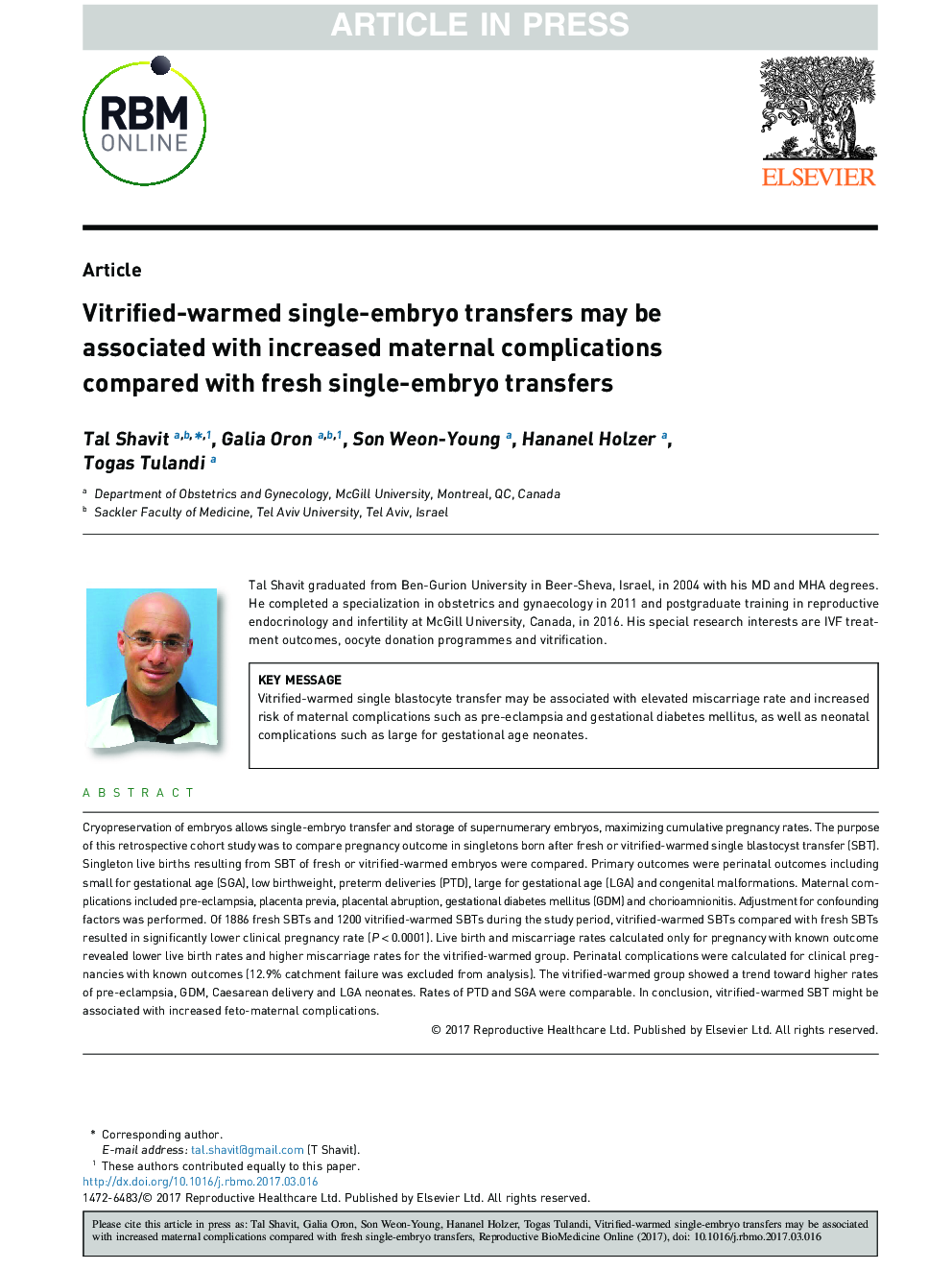| Article ID | Journal | Published Year | Pages | File Type |
|---|---|---|---|---|
| 5696671 | Reproductive BioMedicine Online | 2017 | 9 Pages |
Abstract
Cryopreservation of embryos allows single-embryo transfer and storage of supernumerary embryos, maximizing cumulative pregnancy rates. The purpose of this retrospective cohort study was to compare pregnancy outcome in singletons born after fresh or vitrified-warmed single blastocyst transfer (SBT). Singleton live births resulting from SBT of fresh or vitrified-warmed embryos were compared. Primary outcomes were perinatal outcomes including small for gestational age (SGA), low birthweight, preterm deliveries (PTD), large for gestational age (LGA) and congenital malformations. Maternal complications included pre-eclampsia, placenta previa, placental abruption, gestational diabetes mellitus (GDM) and chorioamnionitis. Adjustment for confounding factors was performed. Of 1886 fresh SBTs and 1200 vitrified-warmed SBTs during the study period, vitrified-warmed SBTs compared with fresh SBTs resulted in significantly lower clinical pregnancy rate (P < 0.0001). Live birth and miscarriage rates calculated only for pregnancy with known outcome revealed lower live birth rates and higher miscarriage rates for the vitrified-warmed group. Perinatal complications were calculated for clinical pregnancies with known outcomes (12.9% catchment failure was excluded from analysis). The vitrified-warmed group showed a trend toward higher rates of pre-eclampsia, GDM, Caesarean delivery and LGA neonates. Rates of PTD and SGA were comparable. In conclusion, vitrified-warmed SBT might be associated with increased feto-maternal complications.
Related Topics
Health Sciences
Medicine and Dentistry
Obstetrics, Gynecology and Women's Health
Authors
Tal Shavit, Galia Oron, Son Weon-Young, Hananel Holzer, Togas Tulandi,
